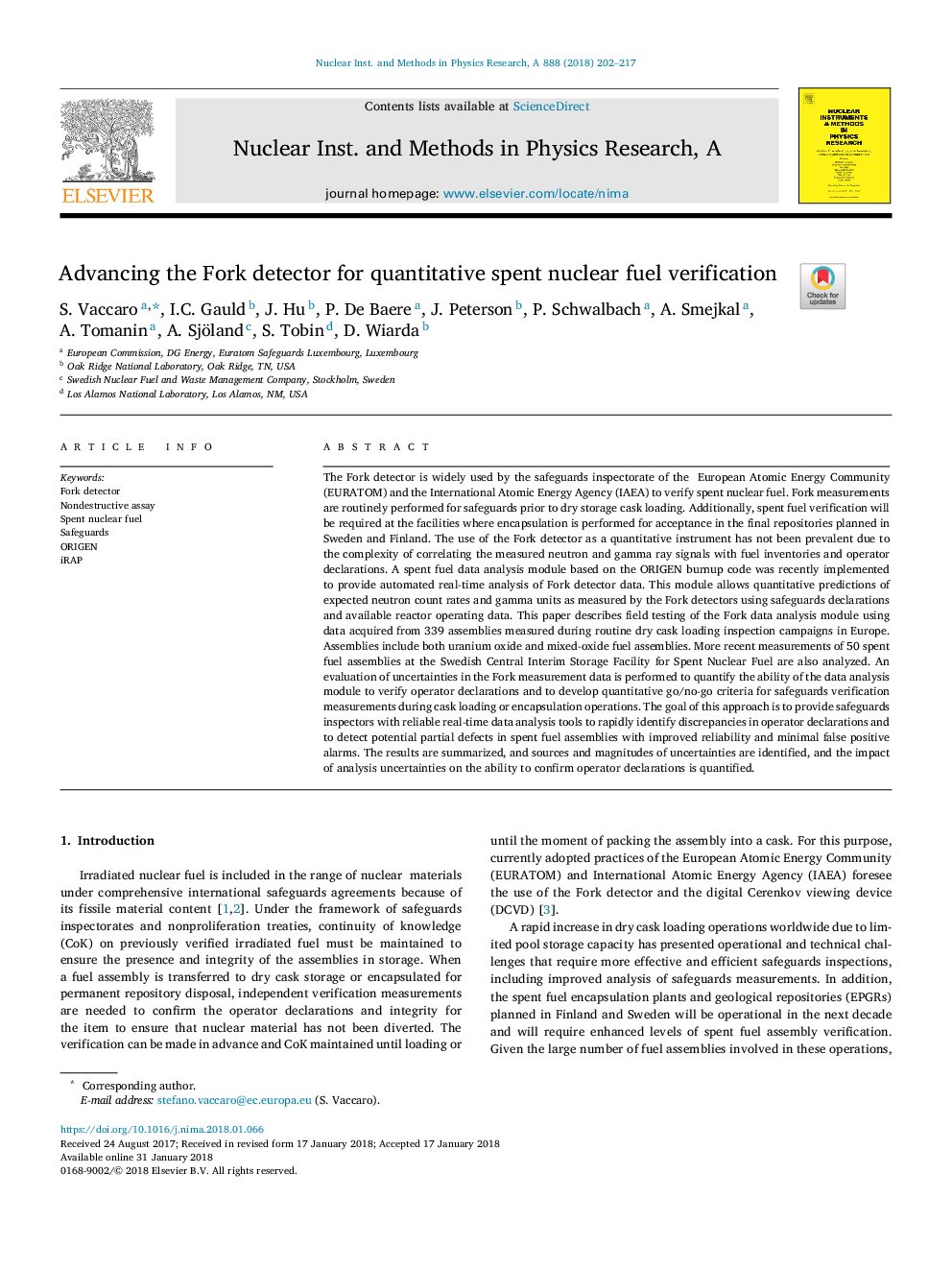| کد مقاله | کد نشریه | سال انتشار | مقاله انگلیسی | نسخه تمام متن |
|---|---|---|---|---|
| 8166632 | 1526238 | 2018 | 16 صفحه PDF | دانلود رایگان |
عنوان انگلیسی مقاله ISI
Advancing the Fork detector for quantitative spent nuclear fuel verification
ترجمه فارسی عنوان
پیشرفت آشکارساز چنگال برای تایید سوخت هسته ای کم مصرف
دانلود مقاله + سفارش ترجمه
دانلود مقاله ISI انگلیسی
رایگان برای ایرانیان
کلمات کلیدی
موضوعات مرتبط
مهندسی و علوم پایه
فیزیک و نجوم
ابزار دقیق
چکیده انگلیسی
The Fork detector is widely used by the safeguards inspectorate of the European Atomic Energy Community (EURATOM) and the International Atomic Energy Agency (IAEA) to verify spent nuclear fuel. Fork measurements are routinely performed for safeguards prior to dry storage cask loading. Additionally, spent fuel verification will be required at the facilities where encapsulation is performed for acceptance in the final repositories planned in Sweden and Finland. The use of the Fork detector as a quantitative instrument has not been prevalent due to the complexity of correlating the measured neutron and gamma ray signals with fuel inventories and operator declarations. A spent fuel data analysis module based on the ORIGEN burnup code was recently implemented to provide automated real-time analysis of Fork detector data. This module allows quantitative predictions of expected neutron count rates and gamma units as measured by the Fork detectors using safeguards declarations and available reactor operating data. This paper describes field testing of the Fork data analysis module using data acquired from 339 assemblies measured during routine dry cask loading inspection campaigns in Europe. Assemblies include both uranium oxide and mixed-oxide fuel assemblies. More recent measurements of 50 spent fuel assemblies at the Swedish Central Interim Storage Facility for Spent Nuclear Fuel are also analyzed. An evaluation of uncertainties in the Fork measurement data is performed to quantify the ability of the data analysis module to verify operator declarations and to develop quantitative go/no-go criteria for safeguards verification measurements during cask loading or encapsulation operations. The goal of this approach is to provide safeguards inspectors with reliable real-time data analysis tools to rapidly identify discrepancies in operator declarations and to detect potential partial defects in spent fuel assemblies with improved reliability and minimal false positive alarms. The results are summarized, and sources and magnitudes of uncertainties are identified, and the impact of analysis uncertainties on the ability to confirm operator declarations is quantified.
ناشر
Database: Elsevier - ScienceDirect (ساینس دایرکت)
Journal: Nuclear Instruments and Methods in Physics Research Section A: Accelerators, Spectrometers, Detectors and Associated Equipment - Volume 888, 21 April 2018, Pages 202-217
Journal: Nuclear Instruments and Methods in Physics Research Section A: Accelerators, Spectrometers, Detectors and Associated Equipment - Volume 888, 21 April 2018, Pages 202-217
نویسندگان
S. Vaccaro, I.C. Gauld, J. Hu, P. De Baere, J. Peterson, P. Schwalbach, A. Smejkal, A. Tomanin, A. Sjöland, S. Tobin, D. Wiarda,
